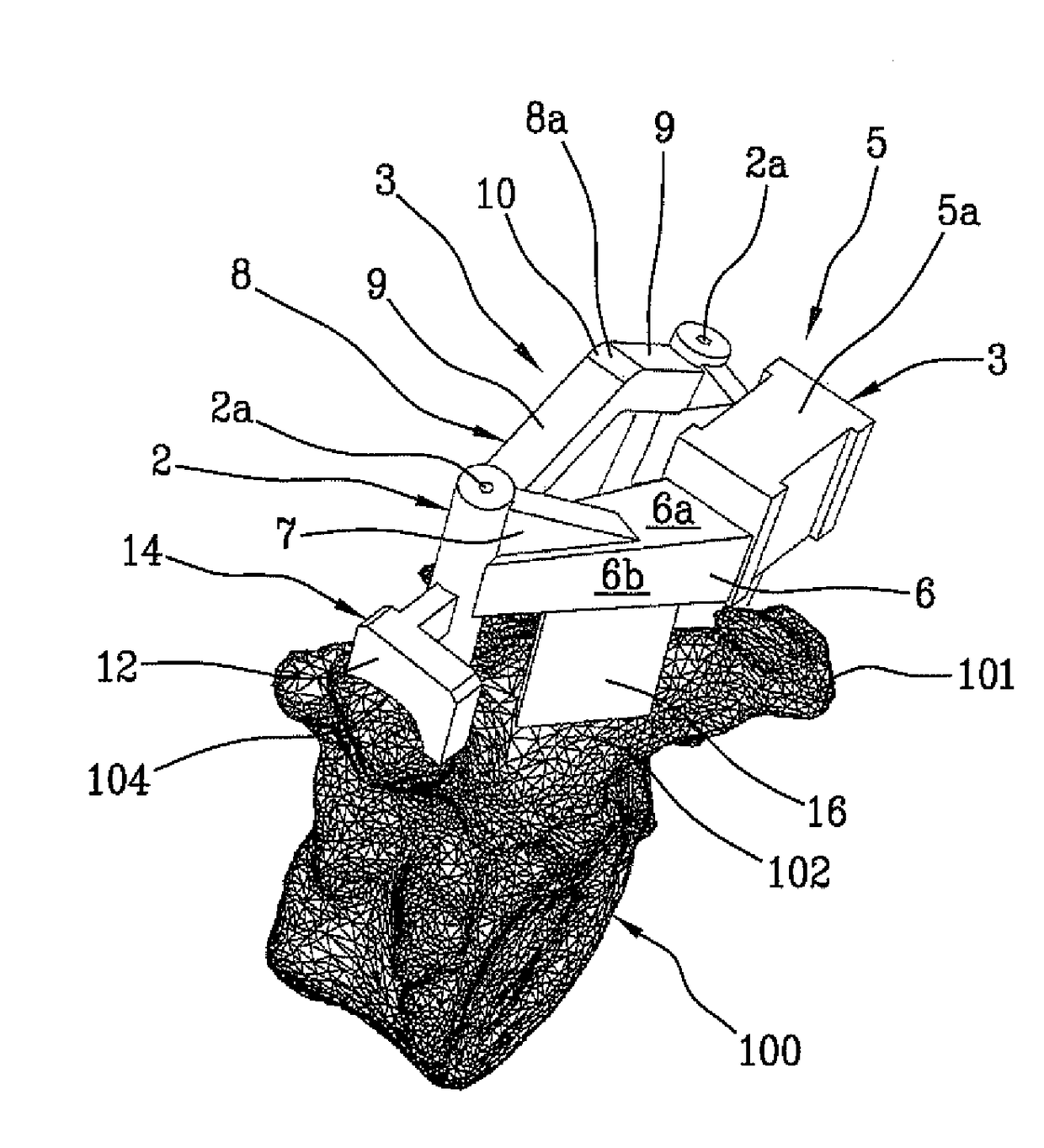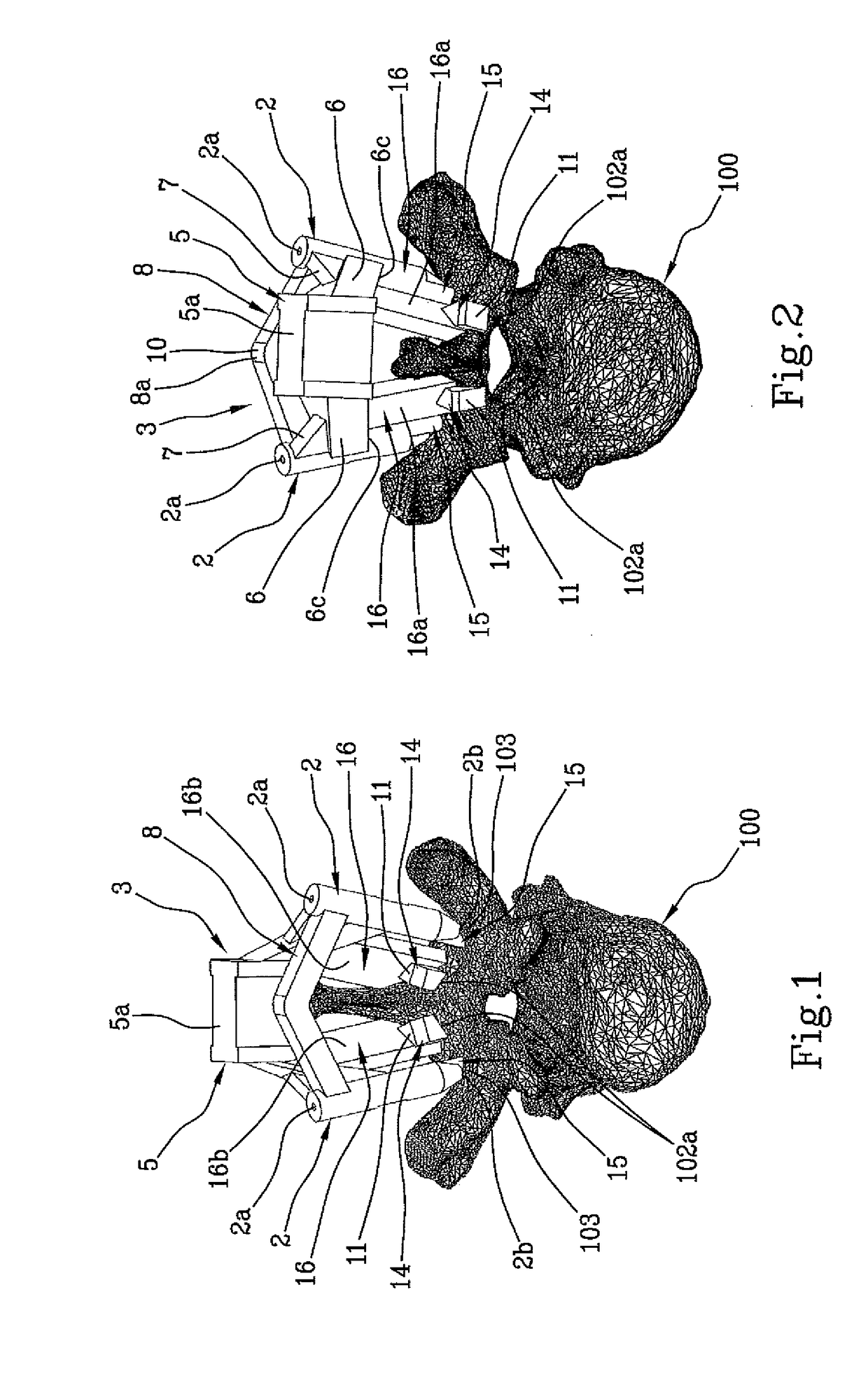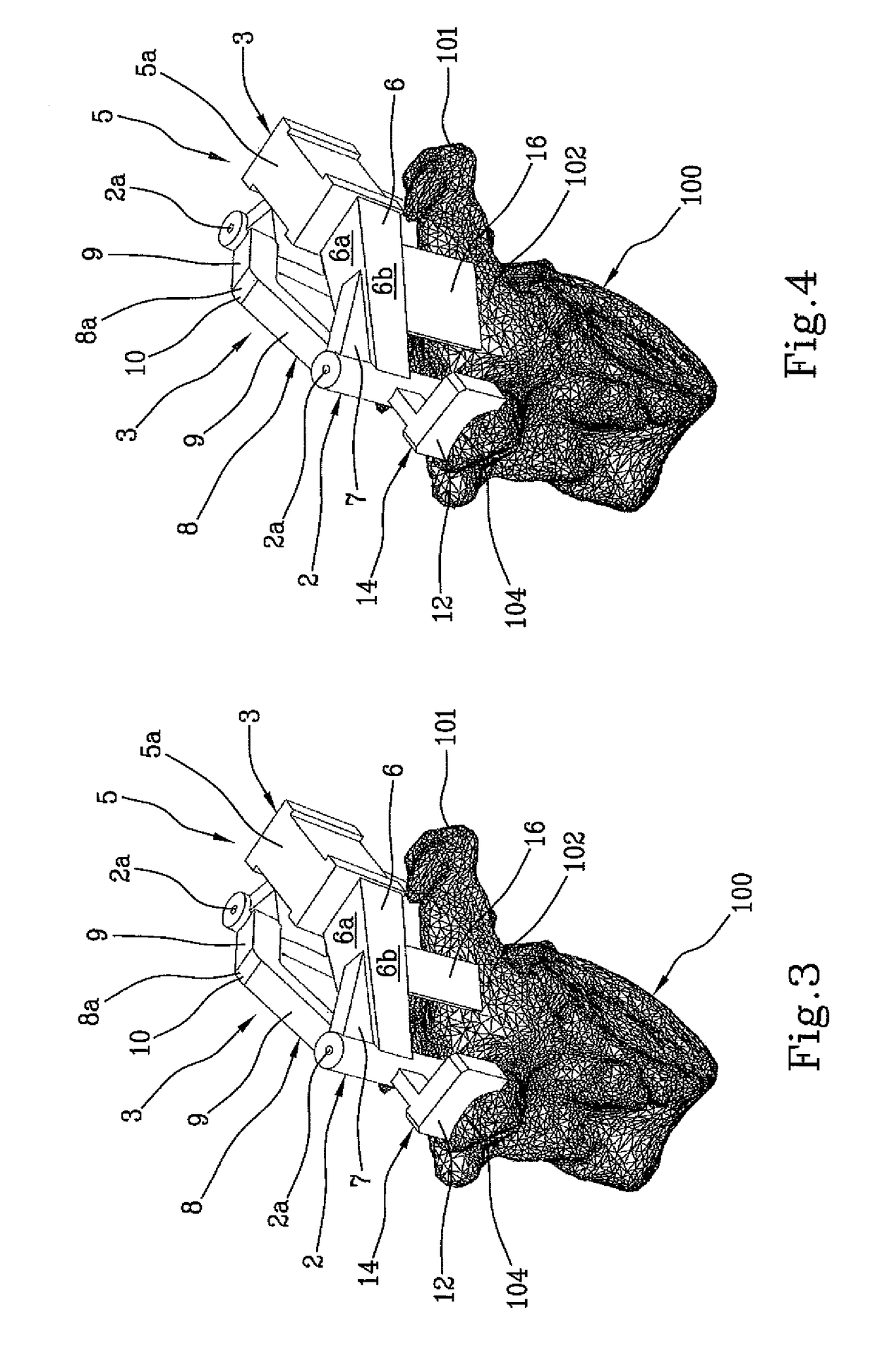Patient-specific navigational guide
a navigational guide and patient technology, applied in the field of orthopaedic surgery, can solve the problems of prolonging the hospitalization of patients, incorrect or suboptimal positioning of pedicle screws or bone resections, and proving to be a difficult and time-consuming task, so as to improve stability, reduce complications and risks, and improve the effect of stability
- Summary
- Abstract
- Description
- Claims
- Application Information
AI Technical Summary
Benefits of technology
Problems solved by technology
Method used
Image
Examples
Embodiment Construction
[0027]Referring to FIGS. 1-8, an exemplary embodiment of a patient-specific navigational guide 1 for spinal surgery is illustrated, which is specifically designed for operations on a vertebra 100.
[0028]As may be readily recognized in these figures, the navigational guide 1 comprises two tubular guiding members 2.
[0029]The two tubular guiding members are integral with a bearing frame 3.
[0030]The two tubular guiding members 2 define the insertion axes for guide wires or two pedicle screws, which should be inserted in the lumbar vertebra according to a pre-operatively planned angle. The insertion axes correspond to the longitudinal axes of the tubular guiding members 2. Therefore, the tubular guiding members 2 feature a proximal opening 2a, from which a surgical tool could be inserted, and a distal opening 2b in the vicinity of the patient's vertebra. The terms “proximal” and “distal” are used with reference to the surgeon.
[0031]The inner diameter of the tubular guiding members 2 is su...
PUM
 Login to View More
Login to View More Abstract
Description
Claims
Application Information
 Login to View More
Login to View More - R&D
- Intellectual Property
- Life Sciences
- Materials
- Tech Scout
- Unparalleled Data Quality
- Higher Quality Content
- 60% Fewer Hallucinations
Browse by: Latest US Patents, China's latest patents, Technical Efficacy Thesaurus, Application Domain, Technology Topic, Popular Technical Reports.
© 2025 PatSnap. All rights reserved.Legal|Privacy policy|Modern Slavery Act Transparency Statement|Sitemap|About US| Contact US: help@patsnap.com



